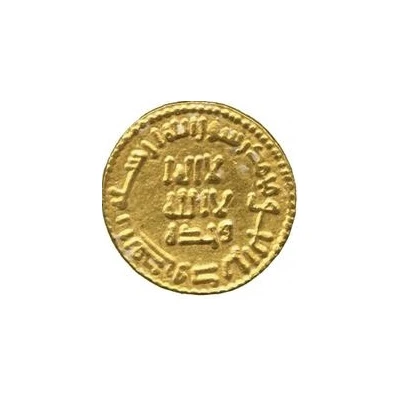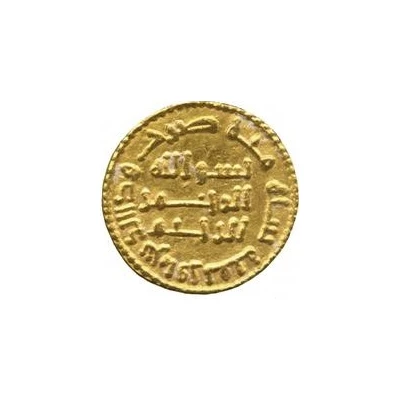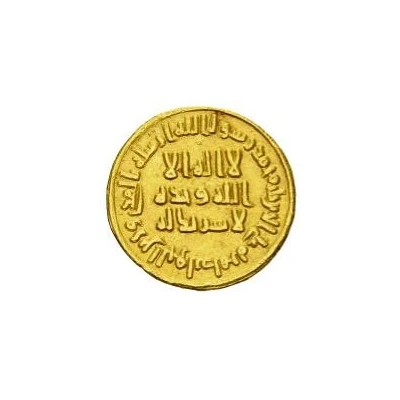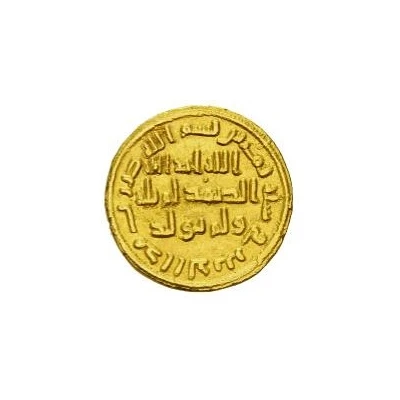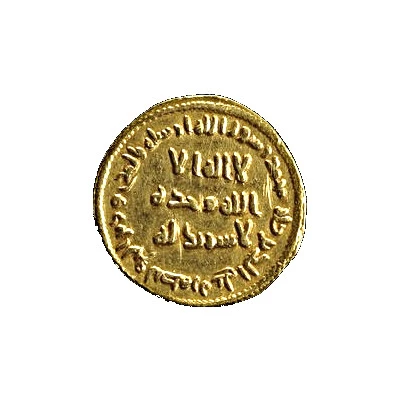
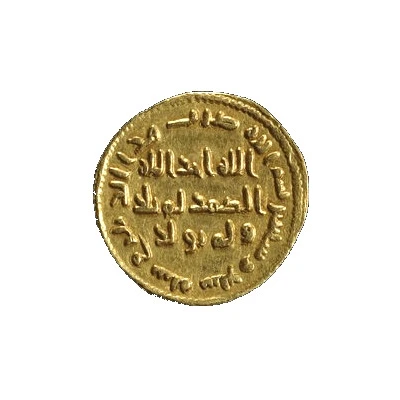

© A. H. Baldwin & Sons Ltd
Dinar - Anonymous no mintname
| Gold (.917) | 4.25 g | 19 mm |
| Issuer | Umayyad Caliphate |
|---|---|
| Type | Standard circulation coin |
| Years | 77-82 (697-702) |
| Calendar | Islamic (Hijri) |
| Value | 1 Dinar |
| Currency | Dinar (661-750) |
| Composition | Gold (.917) |
| Weight | 4.25 g |
| Diameter | 19 mm |
| Shape | Round (irregular) |
| Technique | Hammered |
| Demonetized | Yes |
| Updated | 2024-10-05 |
| Numista | N#70965 |
|---|---|
| Rarity index | 97% |
Reverse
Arabic script
Script: Arabic
Comment
The reform involved substituting any images on the coins for writing. It was principally done because of the unease felt by Muslim clerics against the portrayal of images. From this time inscriptions predominate on Islamic coins, although there are some exceptions.The inscriptions, which do not include the name of the caliph or the mint, state the essence of the Muslim message in Arabic, the Islamic profession of faith, the shahada. The inscriptions are in the angular Kufic script.
Along with the new design came a new weight standard. The Byzantine standard of 4.55 g, which had been previously used, was adjusted to 4.25 g, a weight also known as the mithqal.
Interesting fact
One interesting fact about this coin is that it was issued during the reign of Caliph Abd al-Malik ibn Marwan, who was the fifth Umayyad caliph and ruled from 685 to 705 CE. He was known for his military campaigns and administrative reforms, and his reign saw the introduction of a new currency system, with the dinar being one of the coins minted during this time. The fact that this coin was made of gold and weighed 4.25 grams suggests that it was a valuable and important coin in its time.
